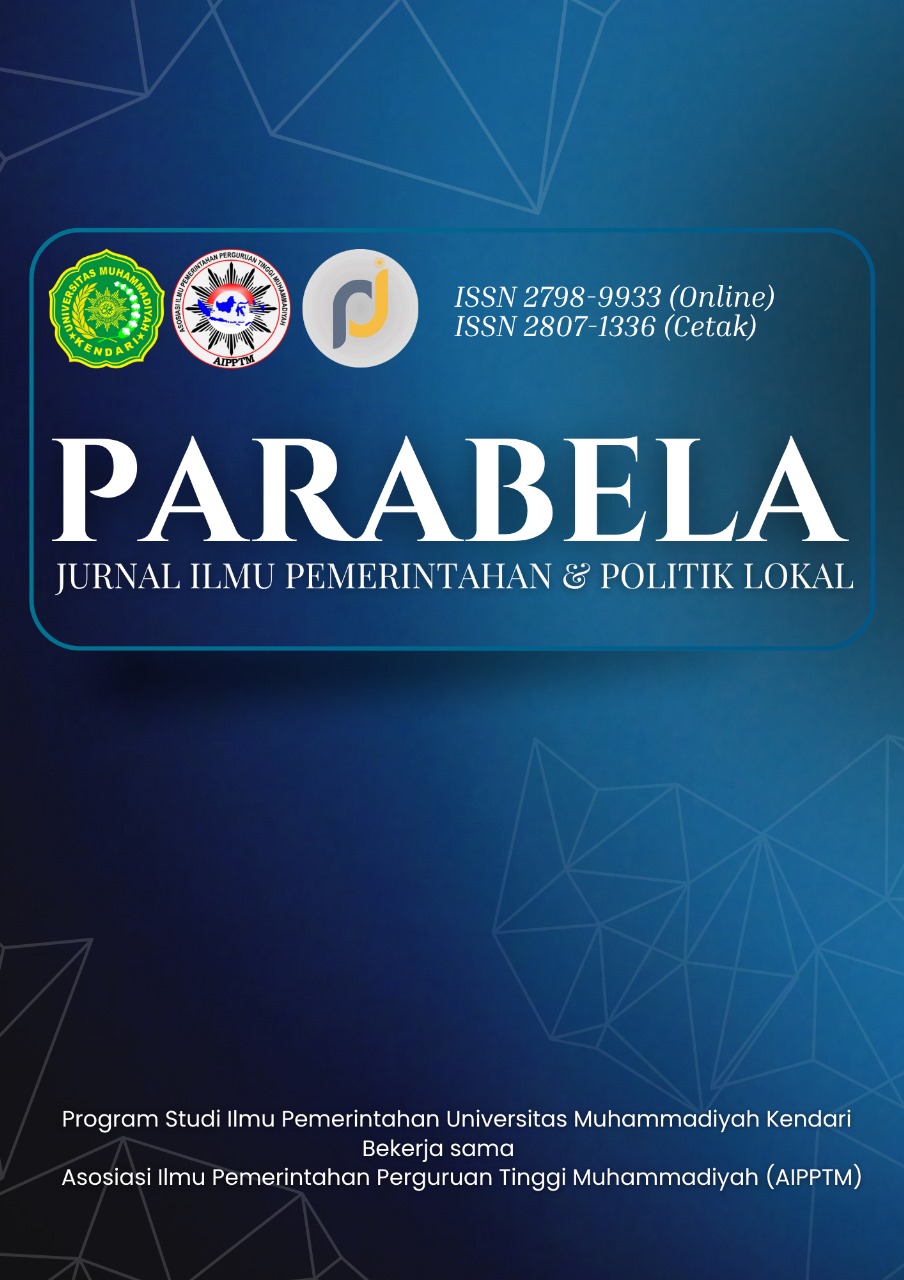Desentralisasi Fiskal di Indonesia dan Jepang: Sebuah Studi Komparatif
Main Article Content
Abstract
Fiscal decentralization has become a key reform strategy adopted by many countries, including Japan and Indonesia, to address regional disparities and promote more equitable development. This study aims to compare the fiscal equalization systems implemented by both countries, focusing on the allocation formulas used to transfer resources from central to local governments. The research employs a qualitative approach with a comparative study method, utilizing document analysis, policy review, academic literature, and regional fiscal data from Japan and Indonesia. The findings reveal that Japan’s Local Allocation Tax (LAT) system—characterized by multiple adjustment coefficients tailored to local conditions—proves to be more effective in narrowing fiscal imbalances than Indonesia’s General Allocation Fund (DAU), which is relatively rigid and fails to fully reflect the actual financial needs of each region. The study concludes that Indonesia’s fiscal equalization mechanism requires reformulation to become more adaptive, responsive, and capable of supporting inclusive and sustainable regional development.
Article Details
Section

This work is licensed under a Creative Commons Attribution-ShareAlike 4.0 International License.
References
Ashfahany, A. El, Djuuna, R. F., & Rofiq, N. F. (2020). Does Fiscal Decentralization Increases Regional Income Inequality in Indonesia? Jambura Equilibrium Journal, 2(2), 68–80. https://doi.org/10.37479/jej.v2i2.6866
BPS. (2024). Produk Domestik Regional Bruto Menurut Provinsi di Indonesia 2019–2023.
DeWit, A., & YAMAZAKI, Y. (2004). Fiscal Cuts or Common Sense? Fiscal Decentralization in Japan. Asia-Pacific Journal, 2(2). https://doi.org/10.1017/s1557466004000245
DJUUNA, R. F., & WIDODO, W. (2016). Desentralisasi Fiskal dan Ketimpangan Regional di Indonesia Tahun 2004–2013. 2016. http://eprints.undip.ac.id/51448/%0Ahttp://eprints.undip.ac.id/51448/1/01_DJUUNA.pdf
Kemenkeu. (2022). Kementerian Keuangan Republik Indonesia Formula Dana Alokasi Umum Tahun Anggaran 2022. 1–6. https://djpk.kemenkeu.go.id/wp-content/uploads/2022/03/Formulasi-DAU-2022.pdf
Khoirunisa, I., & Sulaeman, A. S. (2022). Fiscal Decentralization: Is There a Simultaneous Relationship Between Regional Independence and Social Welfare? Jurnal Tata Kelola Dan Akuntabilitas Keuangan Negara, 8(2), 213–226. https://doi.org/10.28986/jtaken.v2i1.848
KIMURA, S. (2015). Goals and Reforms of Current Japanese Local Tax System. Hitotsubashi Journal of Law and Politics, 43, 17–48. https://meiji.repo.nii.ac.jp/record/14592/files/hitotsubashi_jlp_43_17.pdf
Machida, N. (2023). Taxes and Transfers in Japan’s Local Finances. Local Government Development in Post-War Japan, 85–111. https://doi.org/10.1093/oso/9780199248285.003.0004
Nakamura, T. (2012). Fiscal Decentralization in Japan: An Overview. Asian Economic Policy Review, Vol. 7(No. 2), 331-347.
Nurkhayat, A., Firdaus, M., & MUlatsih, S. (2018). Strategi Optimalisasi Pengelolaan Dana Perimbangan Di Indonesia. Jurnal Manajemen Pembangunan Daerah, 10(1), 35–47. https://doi.org/10.29244/jurnal_mpd.v10i1.22705
Nurman, M. A. (2013). Pengaruh Desentralisasi Fiskal terhadap Disparitas Pendapatn Regional di Indonesia Tahun 2001-2008. Jurnal Organisasi Dan Manajemen, 9(1), 1–20. https://jurnal.ut.ac.id/index.php/jom/article/view/35
OECD. (2021). OECD Regional Outlook 2021. In OECD Regional Outlook 2021.
Oktavianti, A. A. A. M. (2009). Tingginya tingkat pengangguran di Okinawa sebagai dampak dari struktur ekonomi dependensi antara Okinawa dan Jepang. https://lib.ui.ac.id/detail?id=123287&lokasi=lokal#
Ota, H. (2023). Fiscal reform in Ethiopia.pdf.
Saptati, R. (2024). Transformasi Desentralisasi Fiskal untuk Pembangunan Daerah yang Berkelanjutan. https://opini.kemenkeu.go.id/article/read/transformasi-desentralisasi-fiskal-untuk-pembangunan-daerah-yang-berkelanjutan?
Shoesmith, D., Franklin, N., & Hidayat, R. (2020). Decentralised Governance in Indonesia’s Disadvantaged Regions: A Critique of the Underperforming Model of Local Governance in Eastern Indonesia. Journal of Current Southeast Asian Affairs, 39(3), 359–380. https://doi.org/10.1177/1868103420963140
Undang-Undang Republik Indonesia Nomor 22 tahun 1999. (1999). Undang-Undang Republik Indonesia Nomor 22 tahun 1999. Pemerintahan Daerah, 1–70. https://peraturan.bpk.go.id/Details/45329/uu-no-22-tahun-1999
Undang-Undang Republik Indonesia Nomor 25 Tahun 1999 Tentang Perimbangan Keuangan Antara Pemerintah Pusat Dan Daerah. (2001). Undang-Undang Republik Indonesia Nomor 25 Tahun 1999 Tentang Perimbangan Keuangan Antara Pemerintah Pusat Dan Daerah. Peraturan Pemerintah Republik Indonesia Nomor 1Tahun 2001, 2003(1), 1–5. https://www.google.com/url?sa=t&rct=j&q=&esrc=s&source=web&cd=1&cad=rja&uact=8&ved=2ahUKEwjWxrKeif7eAhVYfysKHcHWAOwQFjAAegQICRAC&url=https%3A%2F%2Fwww.ojk.go.id%2Fid%2Fkanal%2Fpasar-modal%2Fregulasi%2Fundang-undang%2FDocuments%2FPages%2Fundang-undang-nomo
Wardhana, A. (2013). Studi kebijakan fiskal untuk mengatasi ketimpangan pendapatan antar wilayah di indonesia adhitya wardhana.

